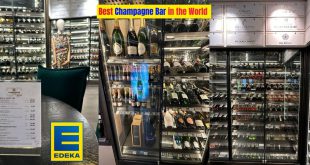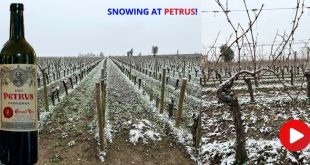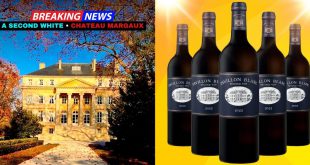Aime Guibert and his wife Veronique Guibert de La Vaissiere founded Mas de Daumas Gassac and planted their first Cabernet Sauvignon vines in 1972.
Located in the commune of Aniane in the south of France, Bordeaux has, however, always been a steadfast inspiration for the Languedoc estate.
Agronomist Professor Henri Enjabert of the University of Bordeaux recognised the potential there to produce great wine. Professor Emile Peynaud – from the same university and considered by many as the world’s first wine consultant – helped delivered (via telephone) the first-born 1978 vintage.
Such has been the quality of Mas de Daumas Gassac that British and French writers and publications have referred to it as the “Latour”, “Lafite” and “First Growth of the Languedoc”.
In the 1990s, Aime Guibert and Veronique Guibert de La Vaissiere went on to found Moulin de Gassac, the second label of their wine adventure.
The main inspiration for Moulin was to save vineyards which otherwise would had been pulled out as a result of a monetary “vine pulling premium” to scale back vineyards across Europe.
Aime Guibert initiated a partnership with growers to preserve their vines. His vision was ahead of the times.
Today, the wines of Moulin de Gassac are celebrated in more than 70 countries and territories around the world.
A while back, Moulin de Gassac introduced a range of wines named for the minerals found in the soil where they are grown.
These are:
Antozonita
Clorofana
Itriocerita
The wines are classified IGP Pays d’Hérault, the Herault being a department of Languedoc-Roussillon where many more varieties find their way into its Indication Géographique Protégée wines.
Moulin de Gassac and Mas de Daumas Gassac are owned and managed by Veronique Guibert de La Vaissiere (an ethnologist who, after receiving her Master’s Degree in Psychology and her Ph D in Ethnology, has dedicated herself since 1968 to doing field research in Ireland), and her sons Roman, Samuel, Gael and Basile.

Antozonita White 2020
Bright light yellow. Hint of peach/apricot/melon/tropical fruit with a pinch of zesty citrus on the round, fresh-ish finish. Medium-plus bodied. Nicely balanced. Delicious on its own and with shellfish, seafood, dim sums, pakoras, tempura, sushi and sashimi. A blend of Terret, Colombard and Grenache Blanc. Fermented – and then aged some four months – in stainless steel tank. Zero oak. All fruit.

Antozonita Red 2020
Floral on the nose with ripe red fruits and cherries. The harmony between supple fruitiness and soft, ripe tannins has been expertly struck. Following a short maceration, the vinification was under controlled temperature of between 22 and 26° Celsius. The finished wine was then matured in stainless steel tank for some 6 months. The blend here is 35% Syrah, 25% Marselan, 20% Merlot and 20% Carignan. Antozonita is the first wine from the Languedoc I have tasted that comprises Marselan (when tasting it blind without knowing the composition, I detected Syrah and thought there was also Grenache). This is the first wine from Moulin de Gassac and Mas de Daumas Gassac containing Marselan. The variety was created in 1961 by the late Paul Truel (1924 – 2014) when he crossed Cabernet Sauvignon with Grenache. The French ampelographer had worked for the Institut National de la Recherche Agronomique or INRA which is located near the Languedoc town of Marseillan for which the hybrid is named.

Clorofana 2020
Liquorice, whiff of violets, a hint of figs, ripe, supple red/blue fruits with soft, round tannins. Medium-bodied and balanced. Drinking very enjoyably now. The blend is Syrah, Grenache and Carignan. After de-stemming the varieties were mixed together and macerated between 10 and 12 days between 25° and 30° Celsius. Following fermentation, the wine was matured in stainless steel tank for some 7 months.

Itriocerita 2020
A touch reductive (Moulin de Gassac recommends decanting for 2 hours). Although the blend is 60% Cabernet Sauvignon and 40% Syrah, the latter variety is more upfront. Tasting it blind without knowing what variety/ies it is made from, I noted “Very Syrah”. The Northern/Southern Rhone variety tends to be reductive. Cherry and light plums. Medium-bodied. Soft tannins. Freshness on the finish. The Cabernet was macerated for around 20 days between 28° and 33° Celsius. As for Syrah, it went through carbonic maceration for some 10 days in stainless steel vats. Following the fermentation, the Cabernet Sauvignon was matured in oak for about 9 months. Although well-made and enjoyable, I find Clorofana and Antozonita to have more stand-out individualism than Itriocerita.



